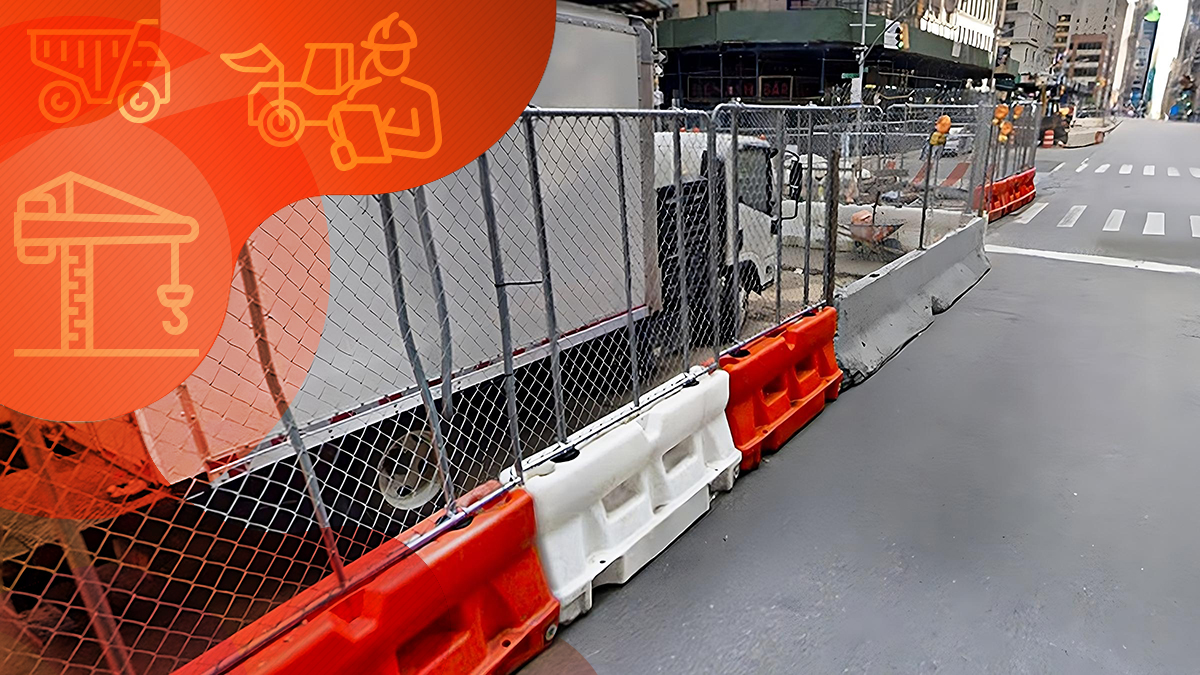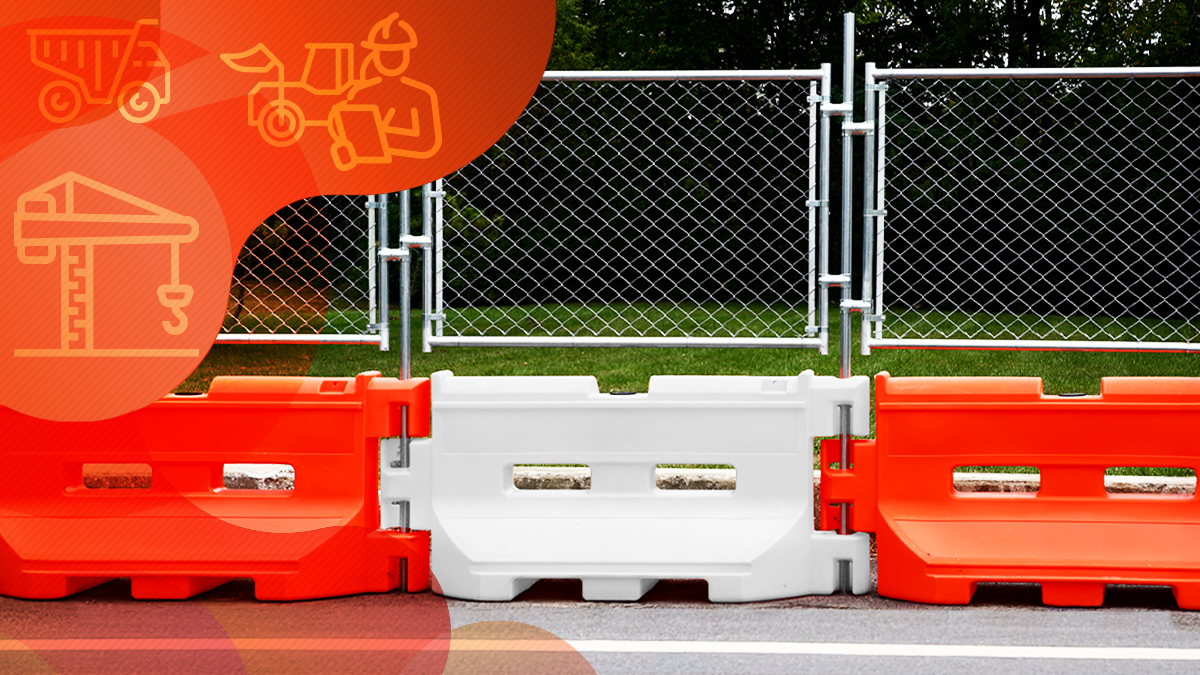How Do I Calculate How Many Fence Panels I Need?
Efficient installations start with accurate calculations. Learn how to determine the right number of fence panels for your site!

Successful temporary fence installation can only happen when you know how many fence panels to install. If you're a temporary fence rental business, the following fencing calculator can help you determine how many panels and fence feet you'll need to fulfill orders. Having the right number of panels is important to meet customer expectations and perform an efficient installation.
Although the following calculations are relatively simple, it's important to get them right. If you don't calculate the number of fence panels correctly, you may have to install fence panels in shifts, or even purchase more fence panels after beginning installation. Failure to bring sufficient fence panels to the jobsite can cause frustration for your customers and even loss of business.
How to Measure a Property Line or Perimeter?
Measuring a basic property line is relatively easy. If the ground is perfectly level and straight, you can use a measuring wheel to gauge the perimeter where the fence will be installed. Simply roll the measuring wheel along the ground, measuring each side of the perimeter, and clear the wheel between each measurement. Record the numbers on your phone or a sheet of paper. It’s helpful to draw a diagram and indicate the length of each side.
If the ground is not perfectly level or perfectly straight, you can also measure it by inserting stakes in the ground in locations where each corner post will be installed. Next, run string from one stake to another. Measure the string when the stakes are installed. Keep in mind that you'll need to know the length of each side.
The total perimeter is less important. Knowing the length of each side is important for calculating the number of panels each side needs.
How to Measure a Curve
The string and stake method described above works well for measuring curved areas. Your fence panels aren't going to be curved, so you'll use progressive placement of corner posts to round a curve or an uneven shape. Install stakes in locations where each corner will be located. This may mean that your perimeter will have more than four sides.
Measure the string on each side, then calculate the number of panels that will fit into each length of string.
How to Measure on a Hill
If the ground is sloped, place a tall post at the low point on the ground, and a short post at the tall point on the ground. Run string straight between the two posts, then measure the string.
Fence Measuring Tips
Measuring a fence may not be that difficult, but the following best practice can help you be successful.
- Measure twice and double check your calculations twice to guarantee they're correct.
- If you're not taking measurements for your customer, supply the customer with very clear instructions on how to measure on their own.


Which Panel Size Is Best?
Temporary fence panels typically come in lengths of 10 ft or 12 ft. Determining which panel sizes are best can be a challenge. Start by measuring the sides. Divide the side measurements first by 10 and then by 12 to determine if one length of fence panels fits better than the other.
In some cases, you may need to vary panel sizes on each side, depending on the dimensions. Be sure to keep track of which panel sizes are intended for each side of your perimeter.
Formula to Calculate the Amount of Panels
The calculation for panel fencing is simple. Measure the side and divide the measurement by the length of the fence panel. If the equation does not produce a whole number, round up to the next full number to determine the number of panels needed for this side.
Each side must have a whole number of panels, because you can't bend a fence panel around a corner.
- How many clamps? The number of clamps needed is the exact same number as the panels required.
- How many fence feet? When selecting the number of fence feet, calculate the number of panels and add one - this is how many fence feet you'll need.
Always Bring Extra Panels
Always bring extra panels to the jobsite, just in case. Panels can become damaged in transit, and clients don't always provide accurate measurements.
Having extra panels helps guarantee you will be able to can complete the job without going back for more materials if something unexpected happens.


Save Up on Temp Panels by Buying in Bulk
Keeping extra panels on hand is important, and SONCO can help with bulk purchases. Buying in bulk saves money by lowering per-unit costs through economies of scale, reducing packaging and shipping expenses, and streamlining inventory management.
Imagine you are renting fences for a large outdoor event and need to set up a temporary fence. You have two options: buying the fence components individually or purchasing them as a bundled kit.
In this hypothetical scenario, if you opt to buy the components separately, the costs could break down like this:
- Stand: $30
- Panel: $105
- Clamp/Bolt: $5
This would total $140 per fence section. However, if you decide to purchase the kit, which includes a chain-link fence panel, a tube stand, and a clamp, the cost would be only $109. This bundled price represents nearly a 30% savings compared to buying each part individually. Plus, if you buy in even larger quantities, you might qualify for further discounts.
When partnering with SONCO, you can speak with one of our sales representatives to secure a deal. Lock in your pricing, secure your customer, and once the first down payment is made, pay for the fence products. This way, the initial investment is minimized. Plus, we can deliver directly to your customer's location—saving transportation costs and leaving you free to focus on installation.
Fence Maintenance
Starting a fence rental business requires an investment, even with bulk discounts. To protect this investment, it's important to keep your fence panels in good condition so they can be rented out repeatedly.
One way to do this is by explaining to your customers how to properly care for the fences during their rental period.
We've created a guide on fence cleaning and maintenance to help. You can use this guide to care for your panels and also share it with your customers!
How to Price Temporary Fence Rentals?
Calculating the amount of fence panels per feet you need for a job is only part of the job. Pricing temporary fence rentals can also be complex. Factors like labor, materials, freight, and accessories all impact the final cost. Underestimating these can cut into profit margins, while overestimating may turn away potential clients. To avoid mispricing, project managers need a reliable way to calculate costs accurately.
The Temporary Fence Rental Calculator simplifies this process by providing tailored pricing estimates based on project specifics. By factoring in market rates, fence length, duration, accessories, and logistics, it delivers a clear breakdown of expected costs. Save time, reduce guesswork, and create more accurate quotes with this tool. Click on the banner below and download it for free!


Trend now

Choosing Between Concrete or Plastic Jersey Barriers
Not all barriers are built the same. Here’s what to know before choosing between plastic and concrete.

Advantages of Water Barriers with Fence Toppers
Learn how a fence topper transforms water barriers into a more secure, private, and effective work site solution.

How to Prevent a Water-Filled Barricade from Cracking When Freezing
Learn how to keep your water-filled barricades functional in freezing temperatures with practical, chemical-free solutions.

